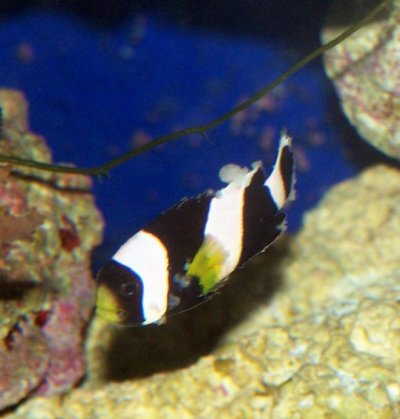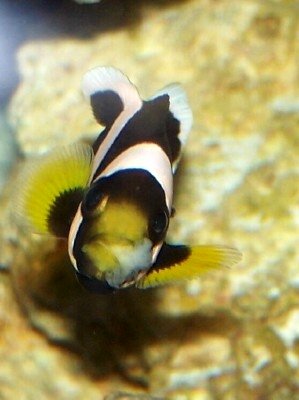Walpurgis
Aquarium Advice Apprentice
Hello, i got a couple of black and white clowns from my LFS, never had a problem with anything that i have bought from him before, but about a week later, started to see little white dots on one of the fish, thought it was ick, and decided to get some cleaner shrimp, just in case. (These are the only fish that we have in the tank right now, though we still have a lot of corals). Well, the shrimp didn't touch the clowns and the clowns really seem fine, eating and swimming all around the tank. The second clown got one spot on him right by his mouth.
Then about a week ago, the dots were getting bigger, a lot bigger, like cotton balls on the fins and around the mouth of the fish, so i called the LFS and asked him about it. He said that it was flukes and that he had some medicine that would not only take care of it but also not hurt any of my corals, so i go by and decide to check out the other clowns that he had in the same tank as the ones i bought, and sure enough they had them too, so i asked him to verify that was flukes, he said yes and i bought the med's. (it was PrazilPro)
So this stuff says that it takes 5-7 days to work and it has been 7 days and my poor fish is still covered with these spots, though it looks like they aren't spreading anymore.
Does anyone know what else i can do for the guy? My LFS guy said that it won't kill him, just that it looks awful, but i hate that he is covered. I went ahead and re-treated the tank again (the directions said that you could)
the perimeters are:
PH: morning 8.0
Sal: 1.024
am:0
Nitrate: 12.5ppm
KH: 9
Cal: 400
thanks!!
PS: if you need/want a picture i can get one when the lights come on a little later. TIA
Then about a week ago, the dots were getting bigger, a lot bigger, like cotton balls on the fins and around the mouth of the fish, so i called the LFS and asked him about it. He said that it was flukes and that he had some medicine that would not only take care of it but also not hurt any of my corals, so i go by and decide to check out the other clowns that he had in the same tank as the ones i bought, and sure enough they had them too, so i asked him to verify that was flukes, he said yes and i bought the med's. (it was PrazilPro)
So this stuff says that it takes 5-7 days to work and it has been 7 days and my poor fish is still covered with these spots, though it looks like they aren't spreading anymore.
Does anyone know what else i can do for the guy? My LFS guy said that it won't kill him, just that it looks awful, but i hate that he is covered. I went ahead and re-treated the tank again (the directions said that you could)
the perimeters are:
PH: morning 8.0
Sal: 1.024
am:0
Nitrate: 12.5ppm
KH: 9
Cal: 400
thanks!!
PS: if you need/want a picture i can get one when the lights come on a little later. TIA


